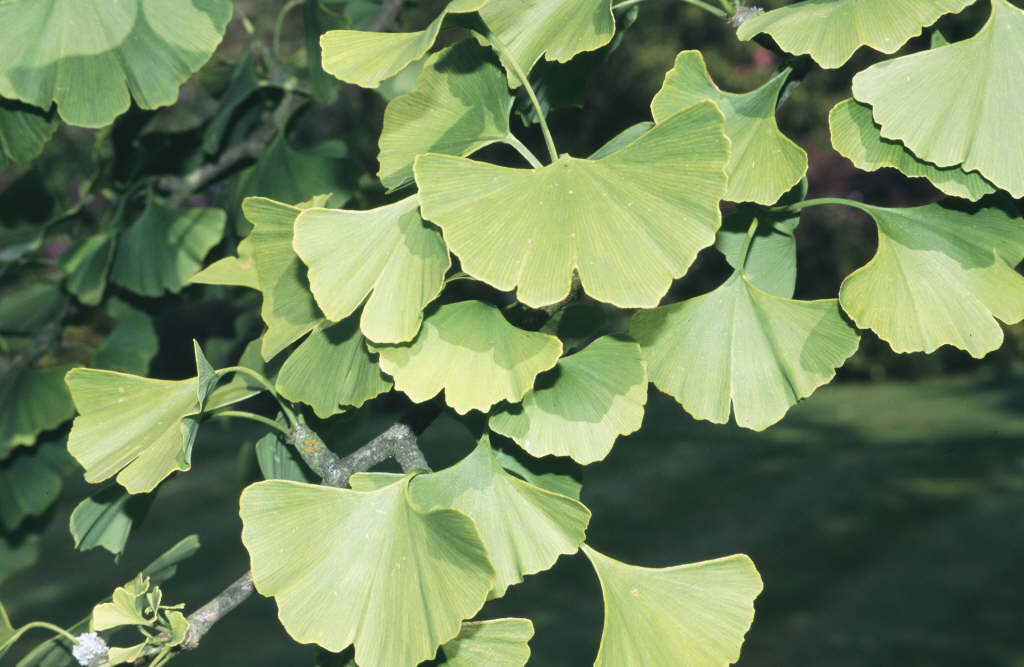Ginkgo biloba
maidenhair tree
A deciduous tree to 25m, conical when young, becoming more irregular with age. Leaves to 12cm in width, fan-shaped and often bilobed, turning clear yellow in autumn. Unpleasantly scented dull yellow fruits in autumn on female plants
Size
Ultimate height
Higher than 12 metresTime to ultimate height
20–50 yearsUltimate spread
4–8 metresGrowing conditions
Moisture
Well–drainedpH
Acid, Alkaline, NeutralColour & scent
| Stem | Flower | Foliage | Fruit | |
| Spring | Green | Green | ||
|---|---|---|---|---|
| Summer | Green | |||
| Autumn | Yellow | Yellow | ||
| Winter |
Position
- Full sun
Aspect
East–facing or South–facing or North–facing or West–facing
Exposure
Exposed or Sheltered Hardiness
H6Botanical details
- Family
- Ginkgoaceae
- Native to GB / Ireland
- No
- Foliage
- Deciduous
- Habit
- Columnar upright
- Potentially harmful
- Seeds harmful if eaten. Wear gloves and other protective equipment when handling. Seed TOXIC to pets - see the HTA guide to potentially harmful plants for further information and useful contact numbers
- Genus
Ginkgo are large deciduous trees, developing an irregular, spreading crown with age, fan-shaped, 2-lobed leaves, and on female trees, unpleasantly scented yellow fruits each containing a single large seed
- Name status
Correct
- Plant range
- China
How to grow
Cultivation
Grow in well-drained soil in full sun. Tolerant of atmospheric pollution. Excellent specimen tree
Propagation
Propagate by seed or semi-hardwood cuttings
Suggested planting locations and garden types
- Architectural
- Low Maintenance
Pruning
No pruning required
Pests
Generally pest-free
Diseases
May be susceptible to honey fungus (rarely)
Get involved
The Royal Horticultural Society is the UK’s leading gardening charity. We aim to enrich everyone’s life through plants, and make the UK a greener and more beautiful place.
